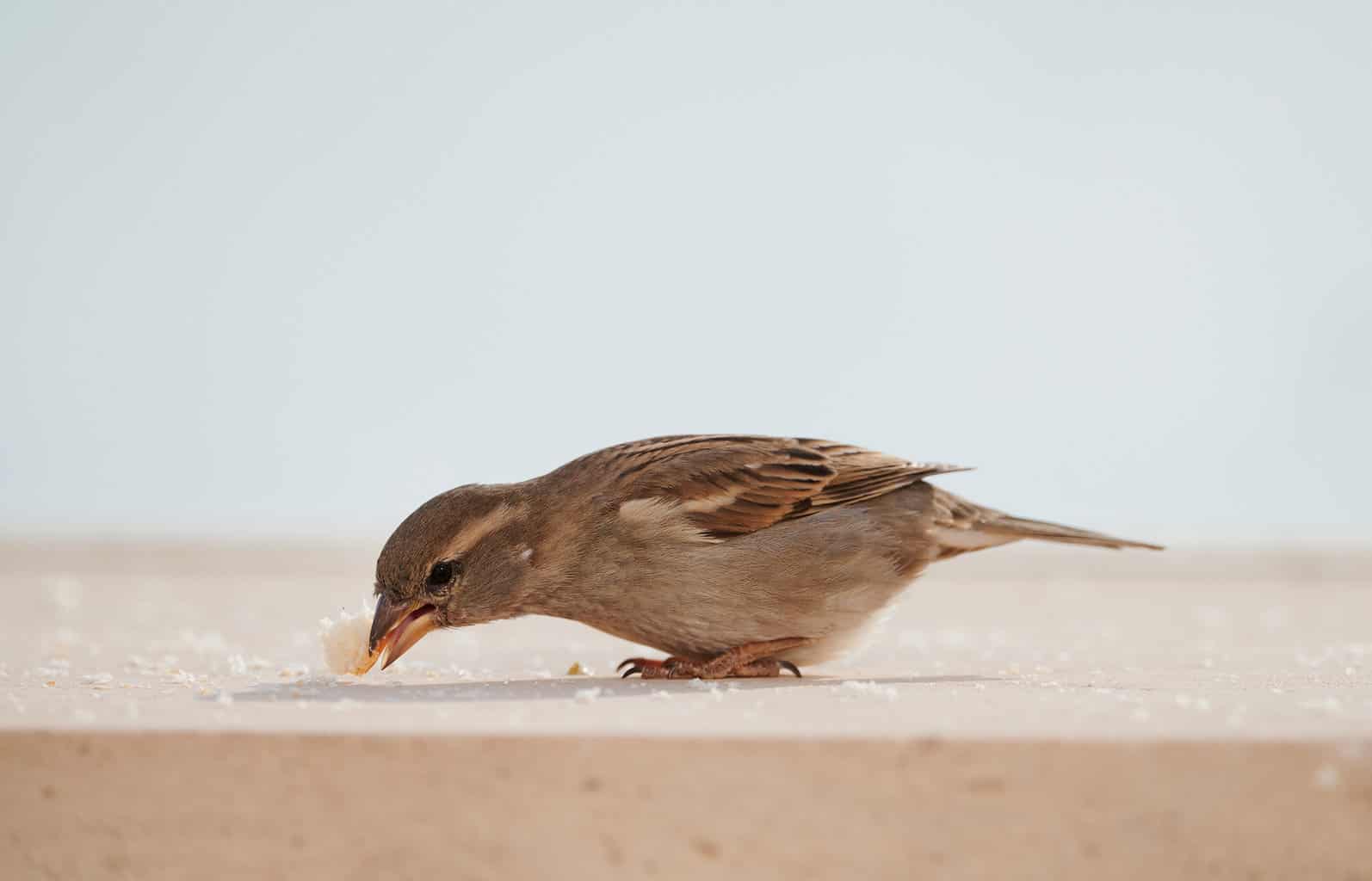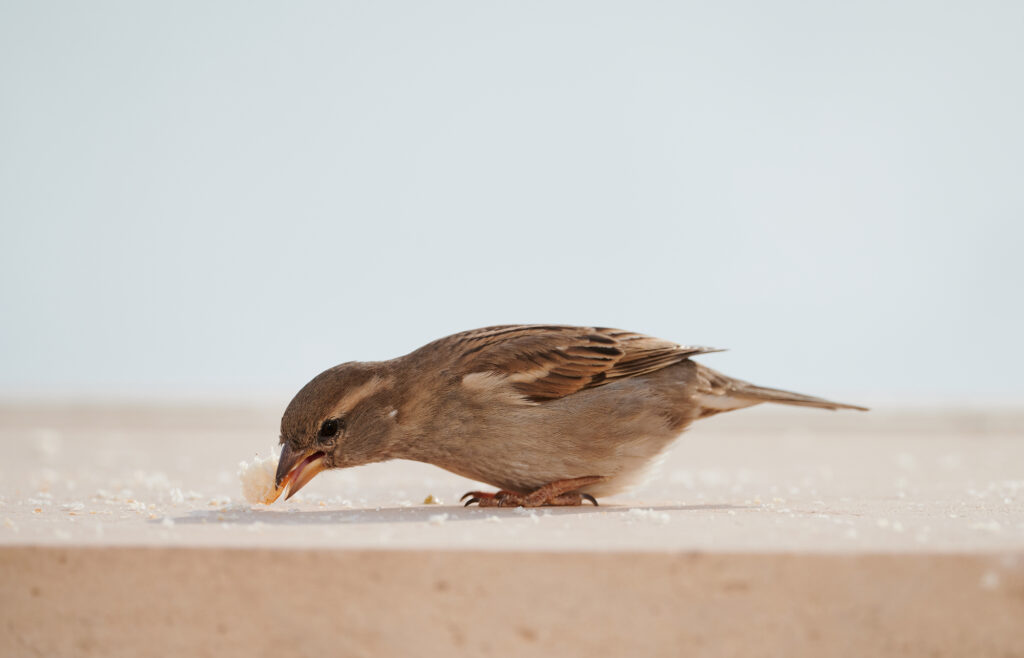Everyone has likely seen people feeding bread — especially stale bread– to ducks or geese at their local park. The birds seem to love it, and it keeps food from going to waste, so what’s the harm?
As it turns out, it could be doing quite a bit of harm!
According to the Canal River Trust, a UK-based clean water charity, people throw millions of loaves of bread into U.K. canals and rivers every year.
While bread may seem harmless, this can lead to algae buildup, diseases, and pests. More significantly, can birds eat bread that is tossed in the river? Is it a good addition to their diets? Well…
The Problems With Bread
Bread Doesn’t Supply Birds With Enough Nutrients
Bread is a filling food, but it doesn’t actually provide much in the way of nutrition. Therefore, when birds consume these starchy treats, it fills them up and makes them less likely to pursue other food sources.
So while a duck or goose on a bread diet may not feel hungry, they may become malnourished if they don’t supplement the bread with actual nourishment.
There’s also the fact that birds that are reliant on human food won’t learn natural foraging behaviors that are essential to their survival. This is especially true for young baby birds.
Basically, feeding birds bread is like feeding them the human equivalent of junk food. Don’t do it!
Too Much Bread Can Cause Angel Wing in Birds
Feeding birds white bread won’t only result in poor health due to insufficient nutrition, it can also lead to health issues. One particularly fatal disorder is called angel wing, an incurable condition that leaves birds flightless.
Angel Wing Syndrome (known also as an aircraft wing or sling wing), happens when a bird’s carpal joint grows incorrectly in its wing. This forces the wing to grow in a twisted or hanging position and makes it impossible for them to fly.
This condition is seen most commonly in birds like ducks, geese, and swans, which are the birds that are most commonly domesticated and fed by humans, according to a study from researchers at the University of Selcuk in Turkey.
This disorder is caused by a vitamin-mineral deficiency and a high sugar and carbohydrate load, often due to bread fed to them by humans.
According to the Chicago Academy of Sciences, Angel Wing Syndrome usually proves fatal in birds because it impairs their ability to hunt for food. And since they’re also usually rejected from their flock, they’re left to starve to death.
With this in mind, don’t feed birds any kind of bread, including sandwich bread, croissants, pastries, bagels, or pizza crust, regardless of whether or not it’s fresh.
Moldy bread is even more dangerous, as it can spread additional diseases and attract animals like mice and rats.
While ducks and geese are the birds most often seen gorging themselves on bread, people sometimes feed other birds bread, thinking they’re doing something good for the birds, not letting food go to waste, or just looking to interact with animals.
It’s not uncommon to see someone at a city park feeding the pigeons or seagulls. There are foods that you can give to birds that are less harmful to them, such as cracked corn, cheese, and nuts, but even these aren’t necessary for many birds.
Birds and other wildlife species have adapted for thousands of years, and are often more than capable of finding their own food without human intervention.
Can I Still Feed Birds in My Backyard?

You can absolutely still feed birds in your backyard. There’s nothing wrong with providing supplemental food for birds at feeders, and it can be a great way to enjoy wildlife.
You can take a few steps to increase the health and safety of birds at your feeder. This starts with feeding birds healthy foods that benefit them.
In general, birds shouldn’t be fed table scraps or most things from your kitchen, with certain exceptions. Orioles, for example, are attracted to oranges, though their wild diet consists mainly of insects and wild berries.
Start by buying a good brand of bird seed.
Mixes that include sunflower, thistle, and other seeds, cracked corn, and millet will attract birds like sparrows and juncos, while woodpeckers, nuthatches, and titmice love nut and dried fruit mixtures, according to the National Audubon Society.
Other birds will enjoy wheat and oat mixes.
Some of these things may sound like foods that humans enjoy as well, but it’s important to note the differences between human food and bird food.
The sunflower seeds that a human would eat at a baseball game or as a salad topping are vastly different from those that are natural and nutritious for birds.
A serving of roasted sunflower seeds that humans chew and eat includes over 100 percent of a human’s daily value of sodium.
That’s far too much salt for a backyard bird!
Bird-specific sunflower seeds are prepared differently and will make for much healthier wildlife in your backyard.
How To Keep Your Feeders Safe and Clean
Bird feeders are also a common place where diseases spread, so it’s important to clean your bird feeders regularly. According to Colorado Parks & Wildlife, diseases like salmonellosis, trichomoniasis, pigeon paramyxovirus, and avian pox can often be spread at feeders.
To reduce disease spread, Colorado Parks & Wildlife suggests using multiple feeders to avoid crowding, keeping food dry, and washing feeders every two weeks.
This can be done either in the dishwasher or by using soapy water followed by a rinse in a 10 percent bleach solution.
Just make sure to rinse off the bleach before putting it back out for birds!

